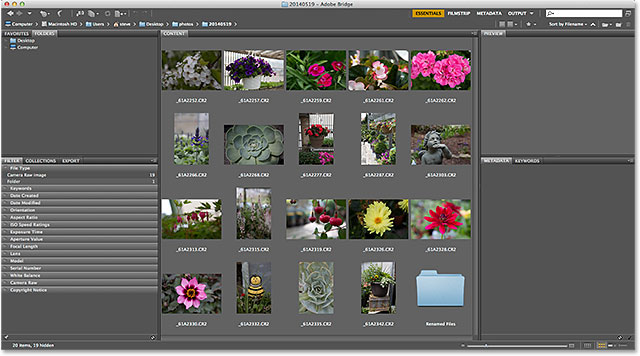

To begin, you can wipe out the sample keywords loaded into Bridge by default and replace them with your own. Both of these sub-keywords can then be categorized under another keyword, such as "vacations". All of your photos from New York go under one keyword, and everything from Paris goes under another, for example. These work less like Metadata and more like a folder hierarchy. You can also choose to organize your assets through Keywords. Related: How to Delete Your Metadata Before Sharing Your Files How to Use Keywords in Adobe Bridge No matter what kind of content you're producing, you'll be more than covered.

DICOM-standard info- Patient Name, Study ID, Referring Physician.GPS info- Latitude, Longitude, and Altitude.Creator (with a field for every piece of contact info).Some categories of metadata represented in Adobe Bridge (aside from ordinary stuff like file name and date created): You can import photos directly from your camera or sort through media already saved to your computer. When you're just browsing, we find that the Libraries workspace is the most ergonomic of the bunch. Folders: This can be really useful when navigating a large and unwieldy group of folders before actually working with any of the media therein.Light Table: Here, the Content panel reigns supreme.Preview: A workspace focused on simply viewing each document.Metadata and Keywords: Both are dedicated workspaces for logging your media.Output: Your go-to when creating a PDF contact sheet.Filmstrip: Offers a thumbnail view of everything else in the folder.Libraries: With the addition of the Preview panel.One of the most obvious things that you can do in Adobe Bridge is browse your collection of digital assets and assess them through Bridge's built-in preview and playback feature.Īt the top, you'll notice several different tabs, all corresponding to a different Adobe Bridge workspace:


 0 kommentar(er)
0 kommentar(er)
